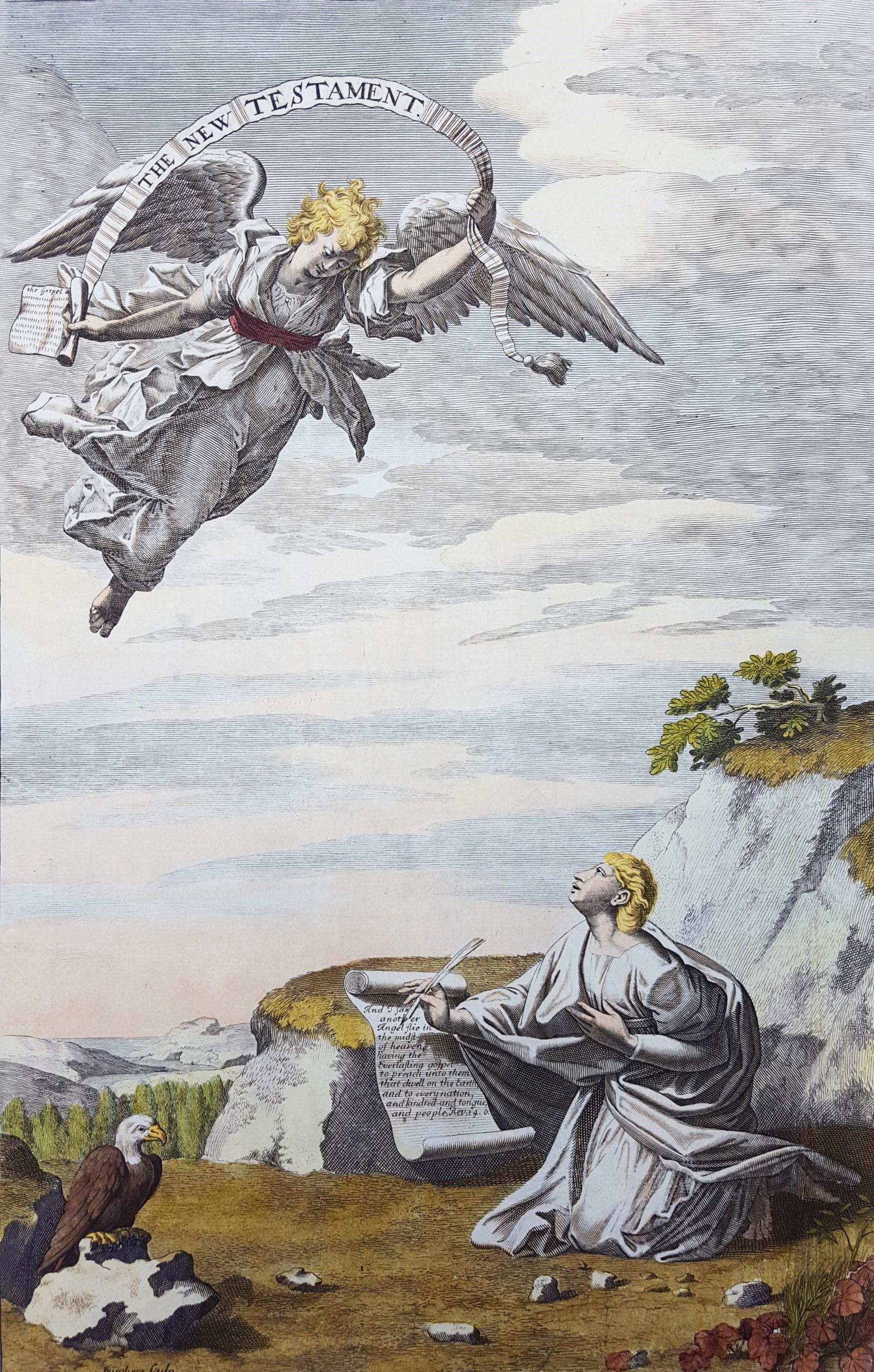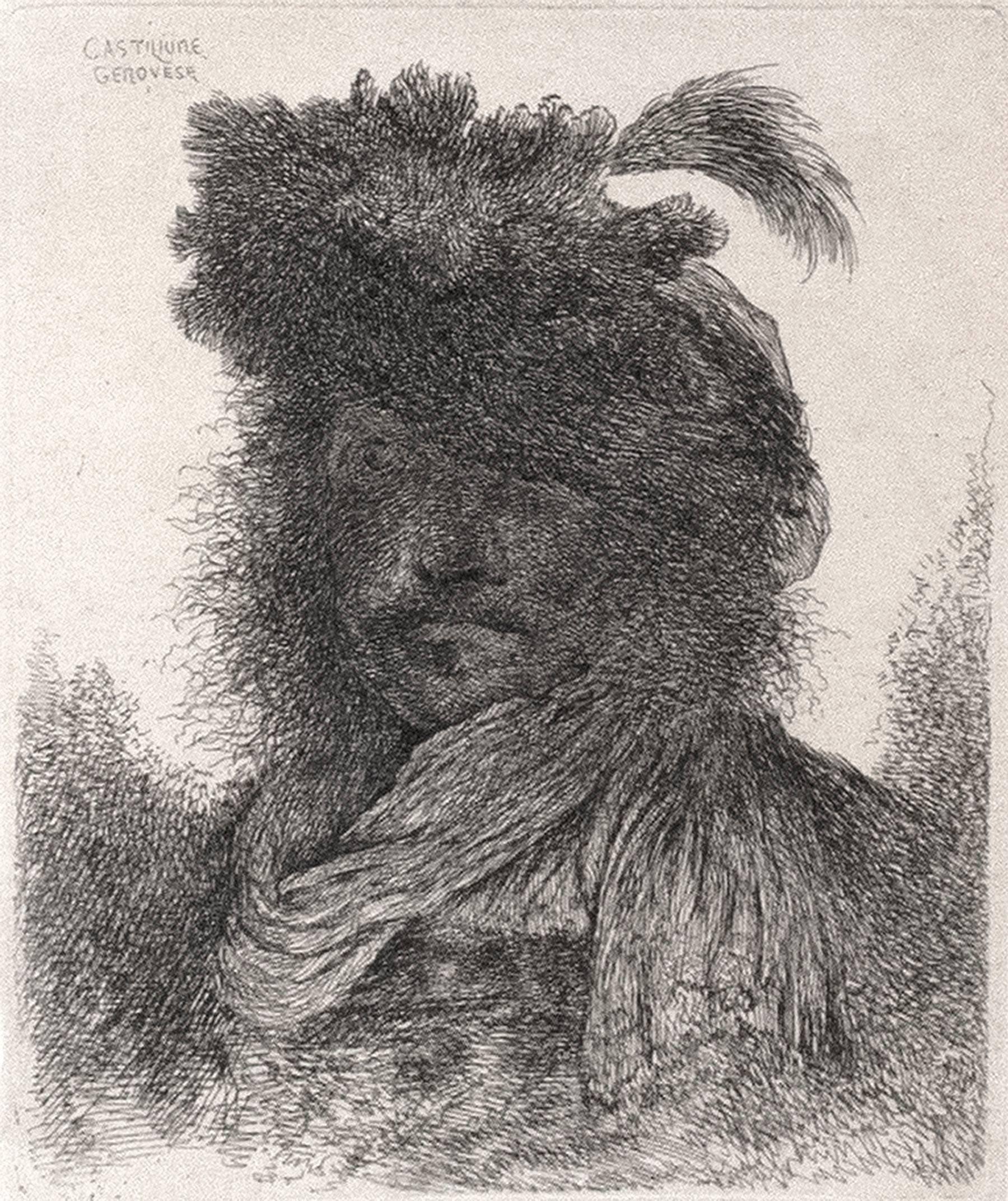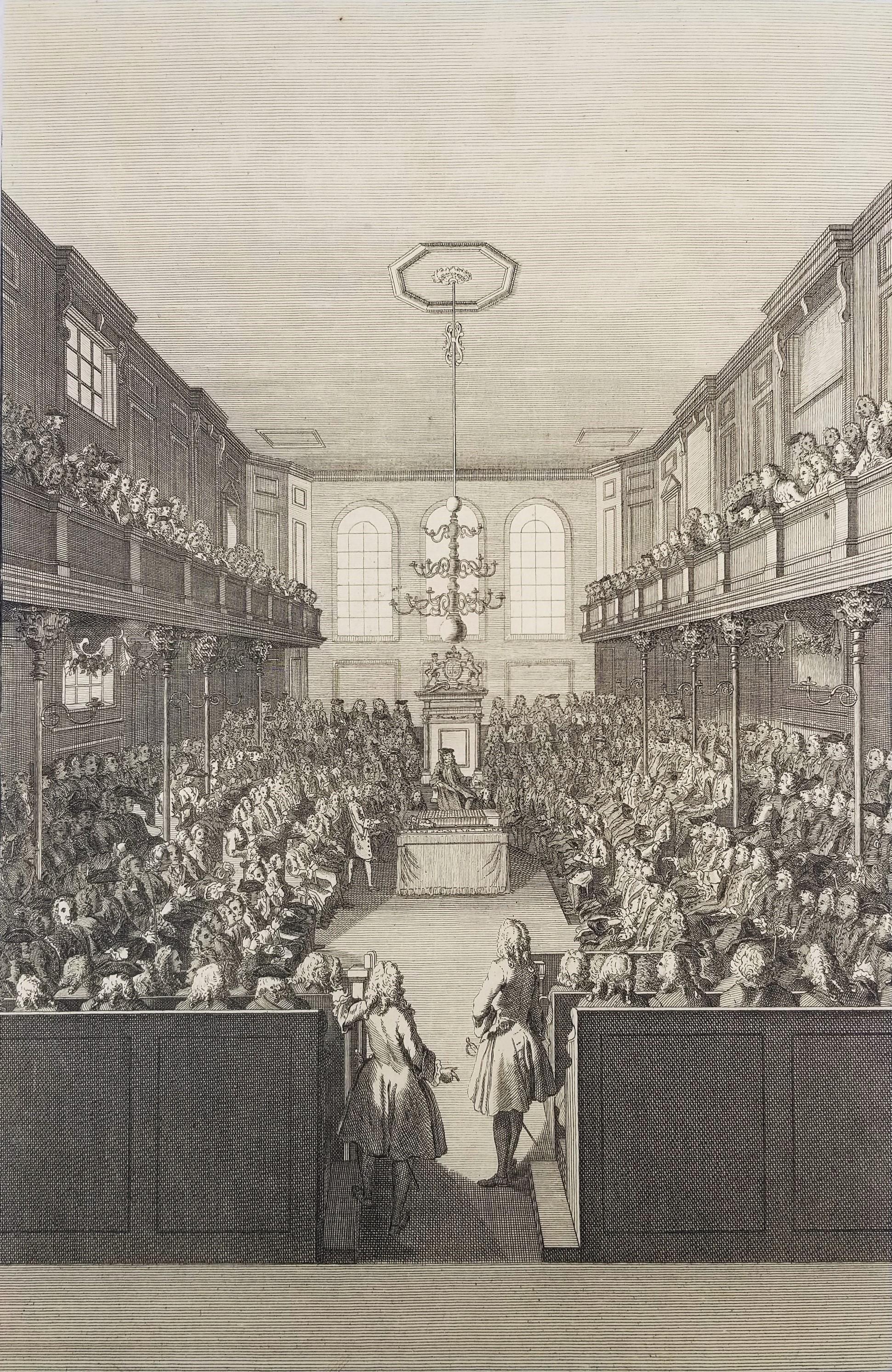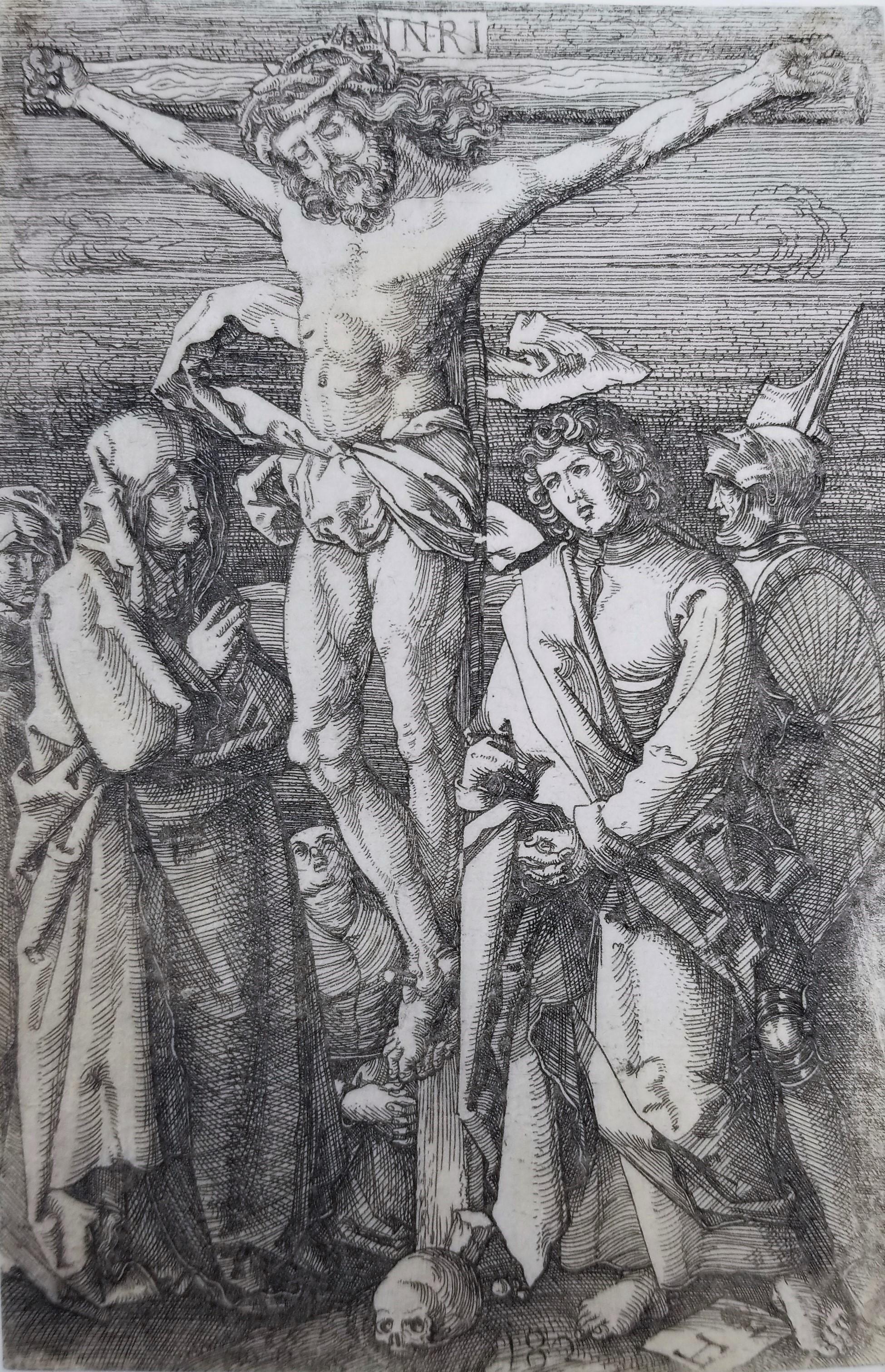Items Similar to Four original etchings of women from 'Aula Veneris' series by Wenceslaus Hollar
Want more images or videos?
Request additional images or videos from the seller
1 of 12
Wenceslaus HollarFour original etchings of women from 'Aula Veneris' series by Wenceslaus Hollar1643
1643
About the Item
Presented here as a group are four original etchings of women in European national dress from the master printmaker Wenceslaus Hollar's series "Aula Veneris: sive, Varietas foeminini sexus (The Court of Women: or, the Variety of the Most Feminine Sex)". Prints of men and women in costume were a popular genre for collectors of the seventeenth century. Hollar would have seen these simple, small-scale prints as an opportunity to take advantage of that market, and he produced several groups of costume prints in the 1630s and 1640s.
He began self-publishing "Aula Veneris" in 1643 after his primary patron in London, Thomas Howard, the Earl of Arundel, left for Austria preceding the English Civil War. The series began under the title Theatrum Mulierum (The Theater of Women) before being retitled after the artist emigrated to Antwerp. Though the plates would suggest a desire to create an encyclopedic grouping of women's costume, he appeared to have planned for the series to be open-ended: the prints were likely sold individually rather than in bound books or portfolios, as no collection of them today has the same combination. Nonetheless, this allowed the series the flexibility to be amended with new additions in later decades, adding to its international breadth.
Girl from Zurich in wedding dress (Virgo nuptialis Tiguriensis), upper left
A Women of Prague (Mulier Pragensis), upper right
Unmarried woman from Zurich (Virgo Tiguriensis), lower left
Strasbourg bride (Virgo nuptialis Argentinensis), lower right
Etchings in black on wove paper, each trimmed to plate edge and tipped
3.5 x 2.25 inches, each sheet
21.5 x 21.5 inches, frame
each signed in the plate, lower left
Framed to conservation standards using archival materials including 100 percent rag matting and mounting. Housed in a gold finish wood moulding.
Prints in good and stable condition; some wrinkling in each corner from tipping; frame in overall good condition with some losses to gold finish.
Wenceslaus Von Prachna Hollar was a prolific and accomplished Bohemian graphic artist of the seventeenth century. His work embraced a great variety of subjects, including scenes from the bible, historical pictures, maps, portraits of his chief contemporaries, views of cities, flower and fruit pieces, and various illustrations to books. His clever sketches of costume, his views of old London and other cities are invaluable to the historian. His engravings are executed with much spirit and carefully finished. Having produced more than 3000 different prints during his career, his works can be found in every major museum collection from the Metropolitan Museum of Art to the National Gallery in London.
Source: Hughes, Heather. "Luxury and Morality: Fashioning Englishness in Seventeenth-Century Costume Prints," in 'Clothing As Culture: Delineating National Character In Costume Prints,' c. 1600-1650. PhD diss., University of Pennsylvania, 2017.
- Creator:Wenceslaus Hollar (1607 - 1677, Czech)
- Creation Year:1643
- Dimensions:Height: 21.5 in (54.61 cm)Width: 21.5 in (54.61 cm)
- Medium:
- Movement & Style:
- Period:
- Condition:Prints in good and stable condition; some wrinkling in each corner from tipping; frame in overall good condition with some losses to gold finish.
- Gallery Location:Milwaukee, WI
- Reference Number:
About the Seller
4.9
Platinum Seller
These expertly vetted sellers are 1stDibs' most experienced sellers and are rated highest by our customers.
Established in 1966
1stDibs seller since 2017
393 sales on 1stDibs
Typical response time: 2 hours
- ShippingRetrieving quote...Ships From: Milwaukee, WI
- Return PolicyA return for this item may be initiated within 14 days of delivery.
More From This SellerView All
- 'The Smoker (Le Fumeur)' original etching by Cornelis-Pietersz BegaBy Cornelis BegaLocated in Milwaukee, WI'The Smoker (Le Fumeur)' is an original etching by the celebrated Dutch painter and printmaker Cornelis-Pietersz Bega. It presents a genre scene of the type Bega was best known for: Bega's principal subjects were genre representations of taverns, domestic interiors and villages. He depicted nursing mothers, prostitutes, drunks, gamblers and fools such as quack doctors and alchemists. In this case, he shows a man seated on a chair with his foot on a flat stool and holding a smoking pipe. For Bega, this representation was more of a caricature than it was an image of a specific person, and such genre scenes would have held allegorical and symbolic meaning for the seventeenth-century viewer. During the seventeenth century, the Dutch of all levels of society consumed tobacco and alcohol, and these were an important part of the Dutch economy and a major source of wealth. At the same time, however, moralists and ministers sought to curb intoxication: they openly described drinking and smoking as sinful, immoral, and a general threat to one’s reputation. This paradox is reflected in prints such as this, which inherently carry the national pride of the Dutch economy alongside a moral warning in a print that could be just as easily consumed and collected. 2.5 x 2.25 inches, print 12.38 x 10.38 inches, frame Framed to conservation standards using archival materials including 100 percent rag matting and mounting materials. Housed in a gold finish Spanish-style wood moulding. Overall good and stable condition; margins cut to plate; some wrinkling in the corners from previous mounting; housed in a new custom frame. Cornelis Bega was born into prosperous circumstances. His mother, Maria Cornelis, inherited half the estate (gold, silver, paintings, drawings and prints) and all of the red chalk drawings of her father, Cornelis Cornelisz van Haarlem, a renowned Mannerist artist. Bega's father was Pieter Jansz Begijn (d 1648), a gold and silversmith. Like other family members, Bega was probably Catholic. Houbraken's claim that Bega studied with Adriaen van Ostade is likely to be correct; this was probably before 24 April 1653, when Bega joined Vincent Laurentsz. van der Vinne in Frankfurt for a journey through Germany, Switzerland and France. Bega had returned to Haarlem by 1 September 1654, at which time he joined the Guild of St Luke; he was already a competent draughtsman, as indicated by his first extant dated work, Interior with a Nursing Mother (1652; Frankfurt am Main, Städel. Kstinst.), and by a remarkable double portrait (Amsterdam, Rijksmuseum) drawn by him and Leendert van der Cooghen in 1654. Bega painted, drew, etched and made counterproofs in a wide variety of materials on different types of small-scale supports. He may have been the first Dutch artist to make monotypes, but this remains controversial. Approximately 160 paintings, 80 drawings and six monotypes by Bega have been catalogued, as well as around 34 etchings. Bega's principal subjects were genre representations of taverns, domestic interiors and villages. He depicted nursing mothers, prostitutes, drunks, smokers, gamblers and fools such as quack doctors and alchemists. Less common subjects include the ridiculed or pestered woman, as in Two Figures and Mother with a Spirits Bottle (c. 1662; Gouda, Stedel, Museum Catharina Gasthuis) and The Inn (etching), as well as witty satires on traditional scenes of middle-class music-makers, such as the Music Lesson (1663; Paris, Petit Palace). Bega's early paintings, such as the Weaver's Family (c. 1652; St Petersburg, Hermitage), are freely executed, dark and coarse, recalling the many-figured peasant subjects of van Ostade. Between c. 1660 and 1664 he began to paint genre scenes with fewer figures, which are finely articulated, colourful and psychologically expressive, for example Two Men Singing (1662; Dublin, N.G.). His exquisite, late fijnschilderen ('fine painting') manner, evident in The Alchemist (1663; Malibu, Getty Museum), compares well with that of Gerrit Dou. As a draughtsman Bega is noted for his single-figure studies, executed mainly in black and white chalk on blue paper or red chalk on white paper. None of the studies, which were drawn naer het leven (from life), seem to relate to a painting or etching. Bega traded drawings or shared models with other artists of the Haarlem school, including van der Cooghen, Gerrit Berckheyde, Dirck Helmbreker and Cornelis Visscher. These artists drew chalk figure studies in a very similar style, characterised by regular and precise parallel shading and well-defined forms; their drawings, especially those of Bega and Berckheyde, have been frequently confused. Unlike the realistic figure studies, Bega's etchings depict interiors with figures or single figures in the manner of van Ostade; the compositions, often with masterful chiaroscuro effects, reflect most closely the paintings of the 1650s. Bega is likely to have remained in Haarlem, where he paid dues to the Guild in 1661. He probably died from the plague; fees for his expensive funeral at St. Bavo's were paid on 30 August 1664. Among the artists he influenced were Thomas Wijck, Jan Steen, Richard Brakenburg (1650-1702) and Cornelis Dusart. Painters such as R. Oostrzaen ( fl ?1656) and Jacob Toorenvliet...Category
17th Century Old Masters Figurative Prints
MaterialsEtching, Paper
- 'Near Mrs. Teshmakers, Edmonton' original etching by John Thomas SmithBy John Thomas SmithLocated in Milwaukee, WIThe present is one of the many prints John Thomas Smith produced of English cottages and vernacular architecture. This example, a view of a cottage in Edmonton, is closely related to...Category
1790s Old Masters Landscape Prints
MaterialsEtching, Paper
- 18th century triptych etching figurative prints small black and white expressiveBy Francois VivaresLocated in Milwaukee, WIFrançois Vivares was known to have produced several copies of images after older masters, such as, in this case, Rembrandt van Rijn. In this set, Vivares reproduces "The Quacksalver" (1635, Bartsch 129), "Beggar man and beggar woman conversing" (1630, Bartsch 164), and "Beggar Seated Warming...Category
1760s Old Masters Figurative Prints
MaterialsEtching
- 17th century etching black and white figurative character print expressiveBy Jan Gillisz van VlietLocated in Milwaukee, WIJan Gillisz van Vliet (1605–1668) was a Dutch Golden Age artist and student of Rembrandt. He worked with Rembrandt between 1628 and 1637, inspired by his master's work. Like Rembrandt, van Vliet made a series of beggar figures, though often with a greater degree of satire and expressiveness. For example, this image of a rat catcher...Category
1630s Old Masters Figurative Prints
MaterialsEtching
- 17th century etching black and white landscape forest trees satyr goats signedBy Giovanni Benedetto CastiglioneLocated in Milwaukee, WI"Mythological Scene--Satyr & Goat Herder" is an original etching signed by Italian artist Giovanni Benedetto Castiglione. It depicts a satyr lounging on the left and an approaching g...Category
Mid-17th Century Old Masters Landscape Prints
MaterialsEtching
- 17th century etching black and white figures sketchBy Claude LorrainLocated in Milwaukee, WI"Etude d'Une Scene du Brigands (Study with Brigands)" is an etching by Claude Gellee (Le Lorrain). This etching is in the collections of the Metropolitan Museum, the Art Institute of...Category
Mid-17th Century Old Masters Figurative Prints
MaterialsEtching
You May Also Like
- The New Testament /// Old Masters Biblical Religious Engraving Dutch Angel ArtBy Michael BurghersLocated in Saint Augustine, FLArtist: Michael Burghers (Dutch, c.1647/1648-1727) Title: "The New Testament" Portfolio: Holy Bible *Signed by Burghers in the plate (printed signature) lower left Year: 1680 Medium: Original Etching and Engraving with recent Hand-Color on watermarked laid paper Limited edition: Unknown Printer: John Baskett, London?, UK Publisher: Moses Pitt, Peter Parker, and Thomas Guy, London?, UK Sheet size (irregular margins): 17.25" x 10.5" Image size: 14.75" x 9.5" Condition: Uneven trimming and light edgewear in margins. One small tear entering image lower right which has been skillfully repaired with added backing paper with archival tape from verso. It is otherwise a strong impression in very good condition with strong colors Very rare Notes: Provenance: private collection - Cotswolds, UK. Comes from the 1685 "Holy Bible" portfolio. John Baskett was deemed printer to the King's most Excellent Majesty, for Great Britain and to the University of Oxford. Large unidentified watermark within center of sheet. There is an example of this work in the permanent collection of the British Museum in London, UK. In the foreground, John the Evangelist, holding a pen and writing...Category
1680s Old Masters Figurative Prints
MaterialsWatercolor, Engraving, Etching, Laid Paper, Intaglio
- Athena Goddess, Ancient Roman Statue - Etching on Paper - 18th CenturyBy Ludovico BoilyLocated in Roma, ITAthena Goddess, Ancient Roman Statue, from the series "Antiquities of Herculaneum", is an original etching on paper realized by Ludovico Boily in the 18th century. Signed on the pla...Category
18th Century Old Masters Figurative Prints
MaterialsEtching, Paper
- Bearded Man with Shadowed Face, Wearing a Scarf and a Plumed Hat, (3rd state)By Giovanni Benedetto CastiglioneLocated in Chicago, ILBearded Man with Shadowed Face, Wearing a Scarf and a Plumed Hat, (3rd state), 1645-50 Etching on laid paper 152 x 184 mm.; 6 x 7 1/4 inches References: Bellini 45 Bartsch 52 Note...Category
17th Century Old Masters Figurative Prints
MaterialsLaid Paper, Etching
- Jan Six by Pierre François Basan, after RembrandtBy (After) Rembrandt van RijnLocated in Middletown, NYEtching on thin laid paper laid down to mid-weight Japon paper, 9 5/8 x 7 9/16 inches (244 x 190 mm), narrow to thread margins. Lettered below the image in the lower right margin wit...Category
Early 19th Century Old Masters Landscape Prints
MaterialsLaid Paper, Etching, Handmade Paper
- A View of the House of Commons /// George II English Parliament London EnglandLocated in Saint Augustine, FLArtist: Benjamin Cole (English, c. 1697-1783) Title: "A View of the House of Commons" Portfolio: The History and Survey of London from its Foundation to the Present Time Year: 1756 (...Category
1750s Old Masters Figurative Prints
MaterialsLaid Paper, Engraving, Etching
- The Crucifixion (Christ on the Cross) /// Jesus after Albrecht Dürer Old MastersLocated in Saint Augustine, FLArtist: Lambrecht Hopfer (German, Active c. 1525-1550) Title: "The Crucifixion (Christ on the Cross)" Portfolio: (after) The Engraved Passion *Issued unsigned, though monogram signed by Hopfer in the plate (printed signature) lower right Circa: 1530 (second state of three, published c. 1690) Medium: Original Etching on laid paper Limited edition: Unknown Printer: The Hopfer family, Augsburg, Germany; (David Funck, Nuremberg, Germany) Publisher: The Hopfer family, Augsburg, Germany; (David Funck, Nuremberg, Germany) Reference: Bartsch No. VIII.527.12; Hollstein No. 12.II Framing: Recently framed, the sheet is floated over, and top-matted with a 100% cotton fabric rag mat from Holland in a wood moulding and Museum glass Framed size: 14.88" x 13.88" Sheet size: 5.5" x 3.63" Condition: Trimmed to platemark. A few tiny professional repairs: at elbow of Jesus's right arm and the inside thigh of Jesus. Some light skinning upper right corner and lower right area. It is otherwise a strong impression in good condition Very rare Notes: Provenance: private collection - Green Bay, WI; acquired from Sotheby's, New York, NY in c. 2015. The artist Lambrecht Hopfer's printed monogram signature "LH" lower right. The printer/publisher David Funck's (plate) number "182" lower right. This etching is after Albrecht Dürer’s 1511 engraving "The Crucifixion (Christ on the Cross)", ("Dürer-Katalog" - Meder No. 13, page 73). Printed in black from an iron plate. The image depicts Christ on the cross at center, the Virgin at left, two Maries behind her, St. John standing at right, a Roman solider behind him. It is after the eleventh plate of Dürer's sixteen plates from his 1507-1513 "The Engraved Passion" series, ("Dürer-Katalog" - Meder No. 3-18, page 70-74). "The print was originally designed without the number engraved in the lower margin (First state: Lambrecht Hopfer, c. 1530). The Hopfers' descendant David Funck (Nuremberg, 1642–1705) acquired over two hundred of their original iron plates, engraved numbers into them, and re-printed them around 1686-1700. The "182" indicates that "The Crucifixion" was the 182nd print in Funck’s series (Second state: David Funck, c. 1686-1700). About a century later, 92 of these plates were acquired by Carl Wilhelm Silberberg in Frankfurt and printed for the third and final time in the book "Opera Hopferiana", of which "The Crucifixion" was the 90th print (Third state: Carl Wilhelm Silberberg for "Opera Hopferiana", 1802)". - Elizabeth Upper, Cambridge University Library, University of Cambridge, Cambridge, UK Biography: Lambrecht (Lambert) Hopfer (Active c. 1525-1550) was a German Old Masters printmaker. He was the brother of Hieronymus Hopfer (Active c. 1520-1530) and son of Daniel Hopfer...Category
16th Century Old Masters Figurative Prints
MaterialsEtching, Laid Paper
Recently Viewed
View AllMore Ways To Browse
Antique Prints Of Fruit
Antique Wood Moulding
Original Fashion Sketches
Antique Womens Clothing
Map Of Austria
Fashion Illustration Sketch
17th Century Austrian
Antique Gold Trimmed Plates
Antique Plates With Gold Trim
Gold Men Clothing
Antique Map Of Austria
Gold Virgo
Antique Fashion Books
17th C Etchings
Antique Wedding Dress
Antique Wedding Dresses
Civil War Map
Antique English Bible





